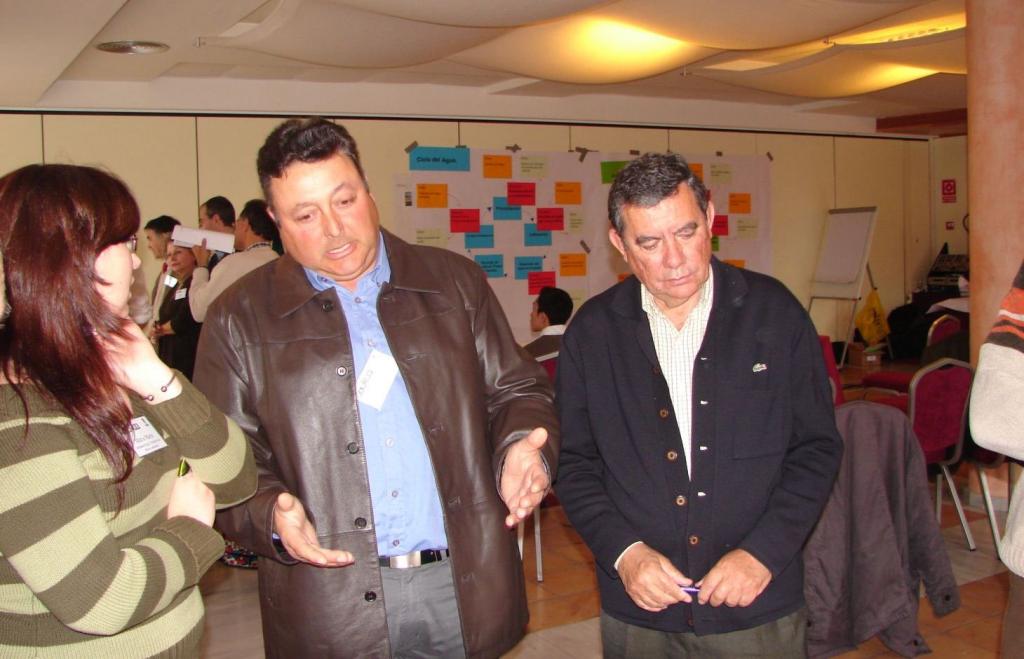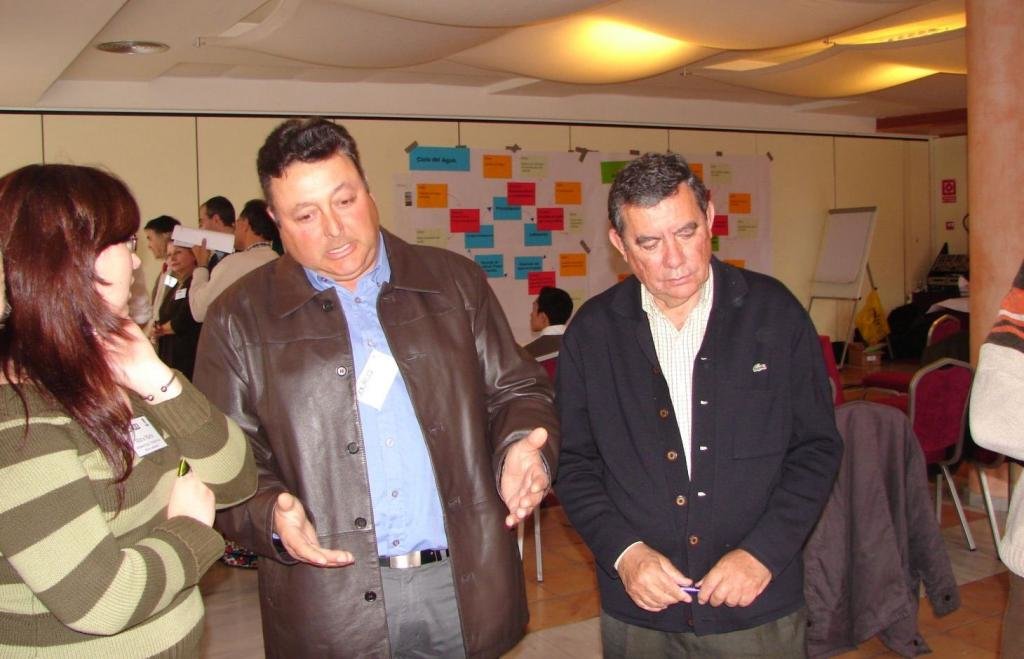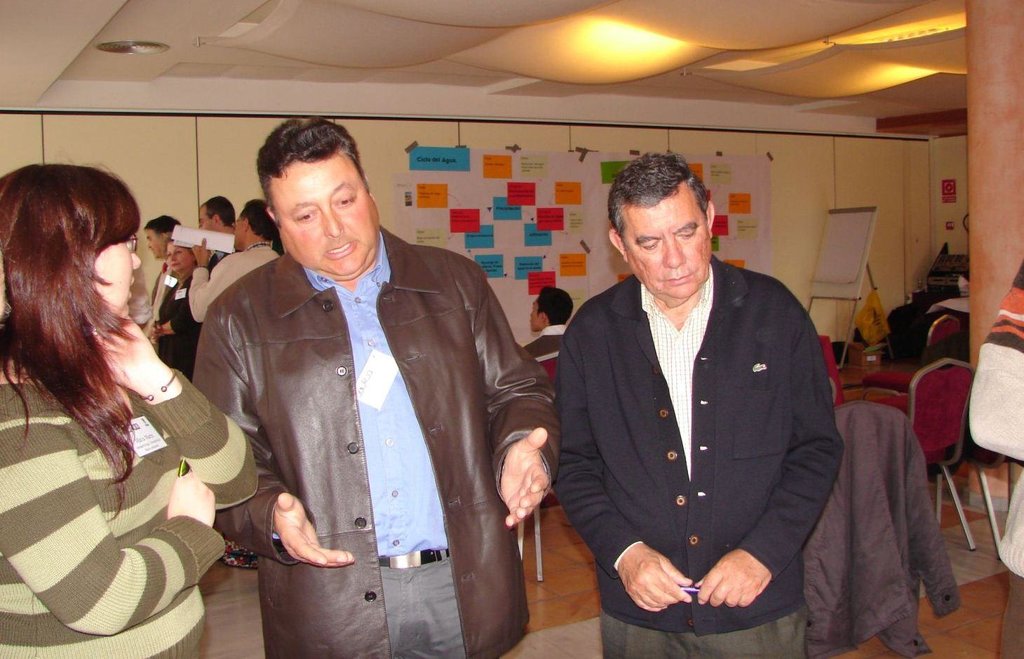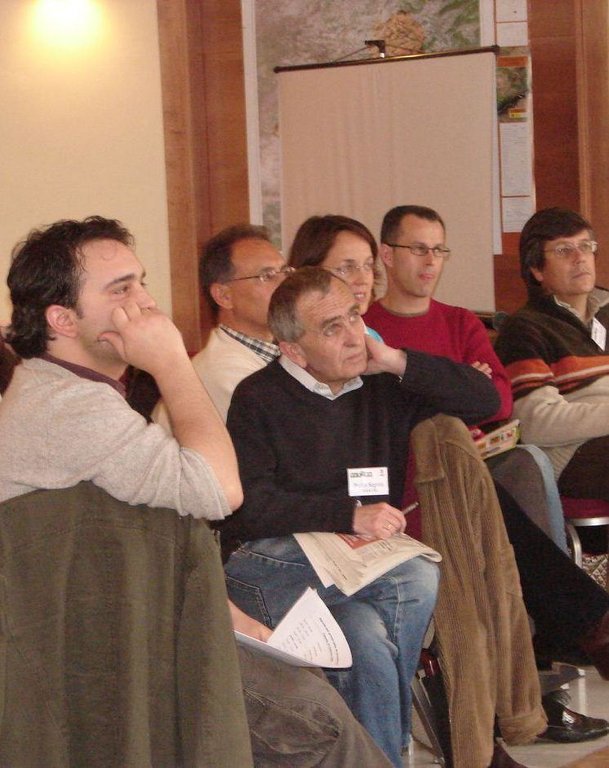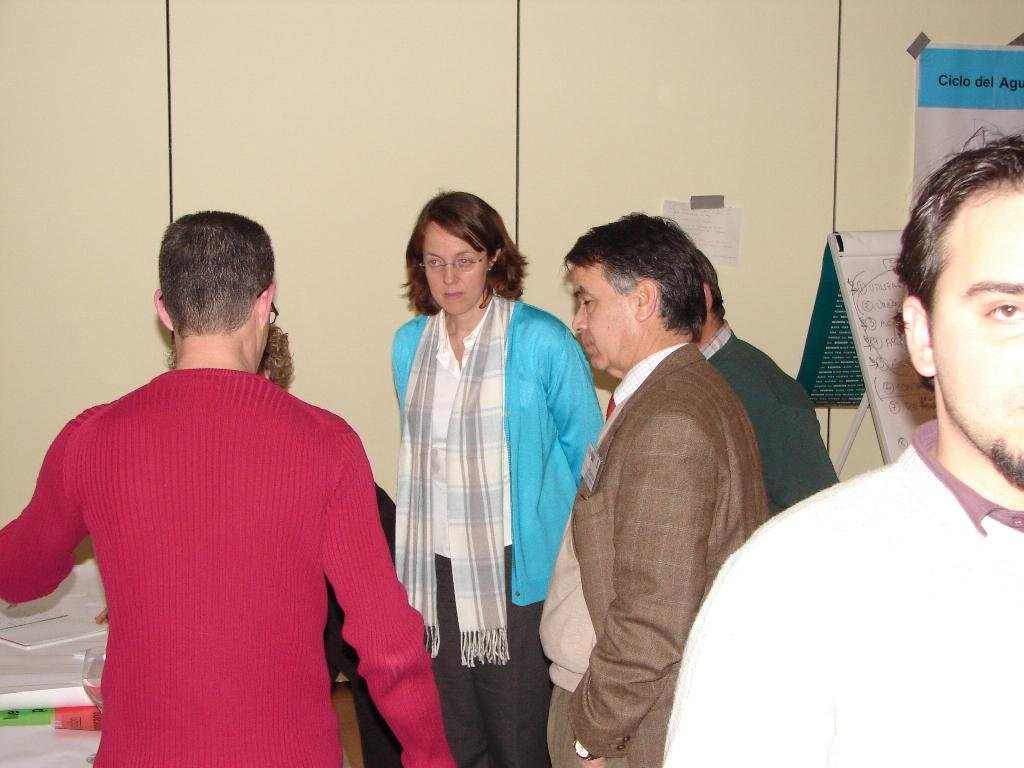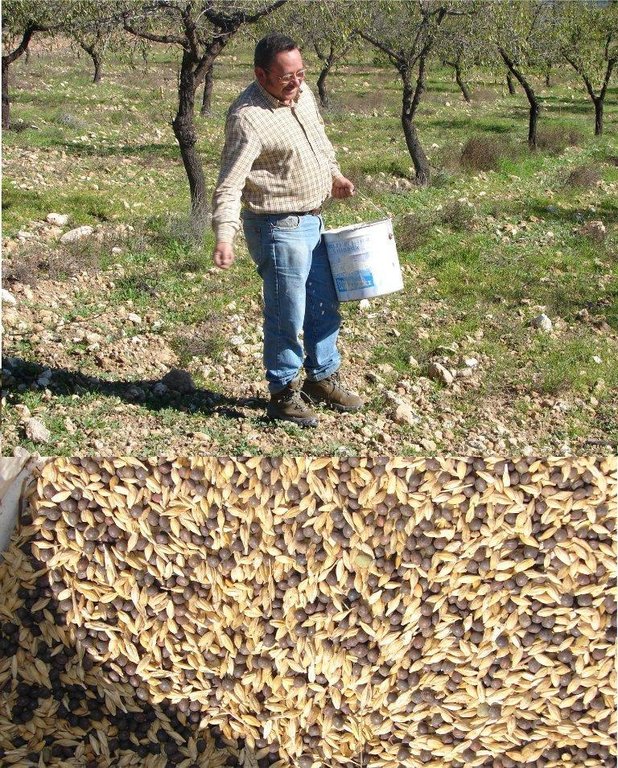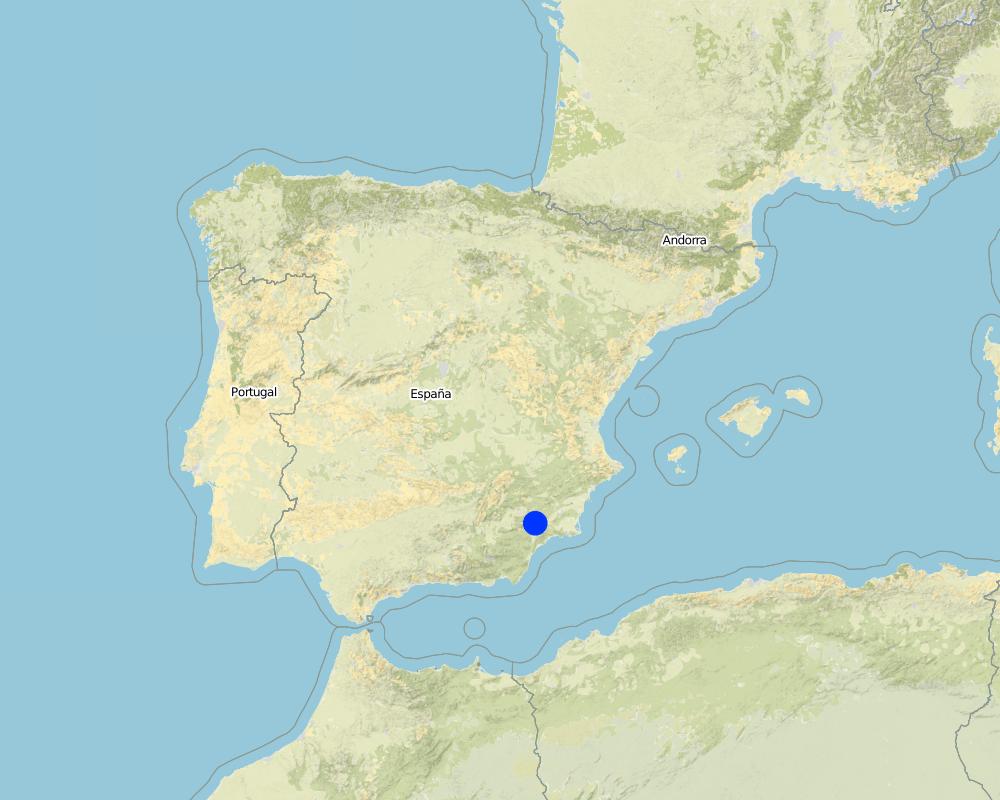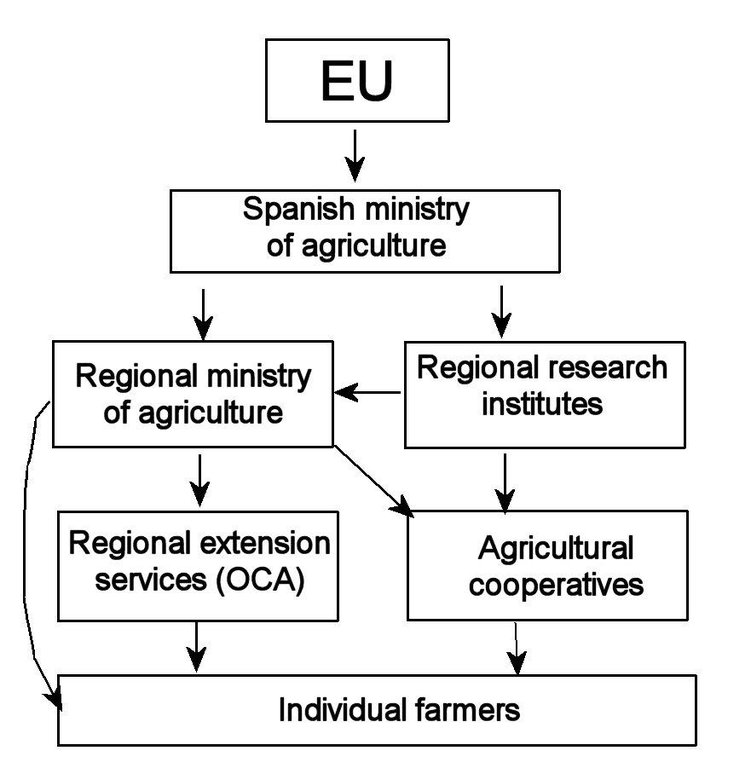Regional rural development programme [Испания]
- Создание:
- Обновить:
- Составитель: Joris De Vente
- Редактор: –
- Рецензенты: David Streiff, Deborah Niggli
Programa de desarrollo rural de la región de Murcia (Spanish)
approaches_2419 - Испания
Просмотреть разделы
Развернуть все Свернуть все1. Общая информация
1.2 Контактные данные специалистов и организаций, участвующих в описании и оценке Подхода
Специалист по УЗП:
Название проекта, содействовавшего документированию/оценке Подхода (если применимо)
DESIRE (EU-DES!RE)Название организации (-ий), содействовавших документированию/оценке Подхода (если применимо)
EEZA-CSIC (EEZA-CSIC) - Испания1.3 Условия, регламентирующие использование собранных ВОКАТ данных
Составитель и ответственный/-ые специалист(-ы) согласны с условиями, регламентирующими использование собранных ВОКАТ данных:
Да
1.4 Ссылка (-и) на Анкету (-ы) по Технологиям УЗП
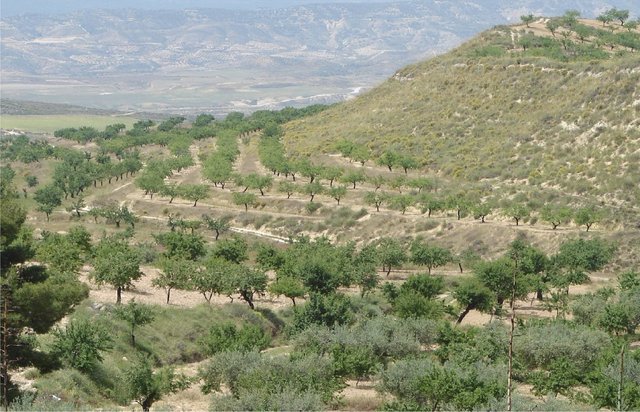
Vegetated earth-banked terraces [Испания]
Earth-banked terraces in cereal and almond cropland covered with drought-resistant shrubs.
- Составитель: Joris De Vente
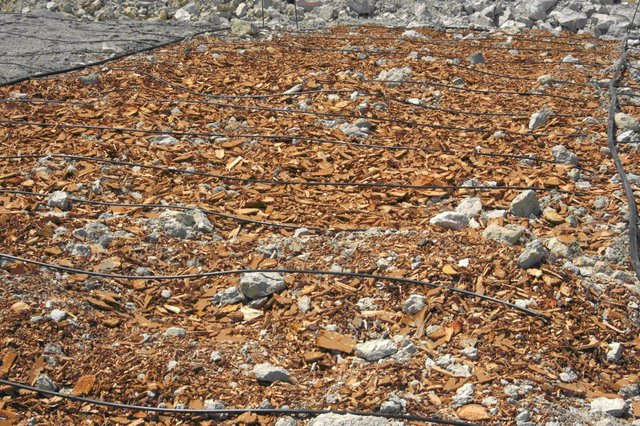
Organic mulch under almond trees [Испания]
Organic mulching to protect against rain-splash, sheet wash and rill formation, reduce evaporation losses and weed growth.
- Составитель: Joris De Vente
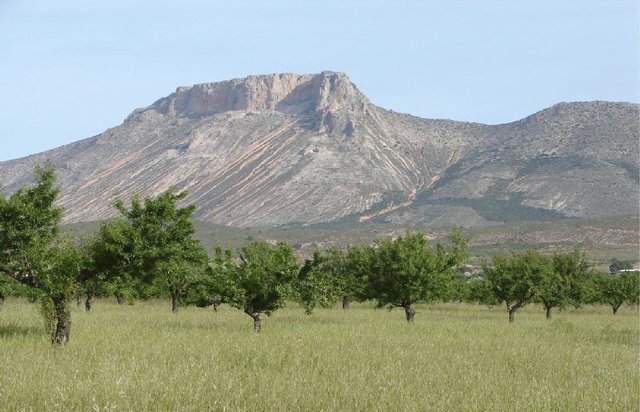
Ecological production of almonds and olives using green … [Испания]
Ecological production of almonds and olives under dryland conditions using green manure to increase soil fertility, to protect against soil erosion and to obtain a high-value product.
- Составитель: Joris De Vente
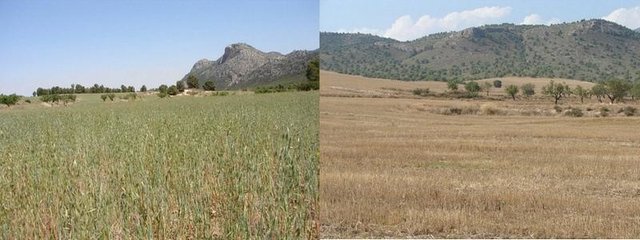
Reduced contour tillage of cereals in semi-arid environments [Испания]
Reduced contour tillage in a rotational system of winter cereals and fallow land.
- Составитель: Joris De Vente
2. Описание Подхода УЗП
2.1 Краткое описание Подхода
Regional development programme to protect natural resources and stimulate rural economies.
2.2 Подробное описание Подхода
Подробное описание Подхода:
Aims / objectives: The objective of the Rural Development Programme (RDP) is to assist farmers who have to deal with difficult environmental conditions (drought, steep slopes) to apply sustainable farming practices either in the implementation phase or for maintenance. The programme is carried out to: 1) improve the socio-economic conditions of rural areas; 2) prevent land abandonment, and 3) prevent on-site and off-site damages caused by land degradation and erosion. To achieve these objectives, the RDP identifies different lines of action: 1) compensate for difficult natural conditions; 2) fight against erosion; 3) reduce farming intensity; and 4) promote ecological agriculture.
Methods: The main method used in the RDP is through subsidies of farming practices following a cross-compliance principle. Each line of action implies a combination of conservation measures that are subsidised, but only when applied in combination. Hence, single conservation measures outside of these lines of action are not subsidies.
Role of stakeholders: The level of the subsidy is based on estimated implementation and maintenance costs and possible loss of productivity caused by the conservation measures. These values were obtained after consultation of various stakeholder groups including farmer organisations with agricultural cooperatives. However, because of limited resources, not all farmers will receive subsidies for the conservation measures. Priority is given to: 1) farmers who have 50% of their land within the Nature 2000 network, a European wide network of protected areas for the preservation of habitats and threatened species; 2) farmers with >50% of their land in unfavourable zones; and 3) farmers who did not receive subsidy in previous RDPs.
Other important information: Furthermore, areas with slopes of more than 20% are not subsidised in this programme since it is recommended that no agriculture takes place in these areas. Instead, reforestation of these areas is subsidised. RDPs are developed for a period of 7 years. Every seven years, a new RDP is defined and priorities and levels of subsidies can change. The present RDP is valid for the period 2007-2013.
2.3 Фотографии, иллюстрирующие Подход
2.5 Страна/ регион/ место, где применялся Подход
Страна:
Испания
Административная единица (Район/Область):
Murcia
Более точная привязка места:
Guadalentín basin, Spain
Map
×2.6 Даты начала и окончания реализации Подхода
Год начала реализации:
2007
2.7 Тип Подхода
- в рамках проекта/ программы
2.8 Каковы цели/ задачи Подхода
The Approach focused mainly on SLM with other activities (Socio-economic development of rural areas)
1) improve the socio-economic situation of rural areas; 2) prevent land abandonment; and 3) prevent on-site and off-site damage caused by land degradation and erosion.
The SLM Approach addressed the following problems: The main problems addressed by the approach are low income and low productivity of farmers in rural areas, subsequent land abandonment, and erosion and land degradation processes causing on-site and off-site damage.
2.9 Условия содействующие применению Технологии/ Технологий в рамках Подхода или затрудняющие его
Социальные/ культурные/ религиозные нормы и ценности
- затрудняют
The problem is not always recognised by everyone and certain practices are cultural.
Treatment through the SLM Approach: Information and training by the regional extension services and the agricultural organisations.
Наличие/ доступность финансовых ресурсов и услуг
- затрудняют
Many technologies require an investment and maintenance, or even reduce productivity because they occupy land
Treatment through the SLM Approach: A subsidy equal to the loss of productivity and implementation and maintenance costs.
Осведомленность в области УЗП, доступность технической поддержки
- затрудняют
Some technologies require establishment of vegetation cover, which is difficult under arid conditions.
Treatment through the SLM Approach: Advice about which vegetation types to use and subsidy to cover the implementation costs.
3. Участие и распределение ролей заинтересованных сторон
3.1 Заинтересованные стороны, участвующие в реализации Подхода и их роли
- местные землепользователи/ местные сообщества
Farmer organisations (agricultural cooperatives)
Traditionally land users and agricultural activities are dominated by men
The focus of the approach is on the socioeconomic situation of farmers with a relatively low income and under marginal conditions.
- эксперты по УЗП/ сельскому хозяйству
Research institutes
- местные власти
regional ministry of agriculture
- государственные власти (отвечающие за планирование или принятие решений)
Part of the subsidies are paid directly by the national government
- международные организации
Part of the subsidies are paid through the EU feader programm
3.2 Участие местных землепользователей/ местных сообществ на разных стадиях реализации Подхода
| Участие местных землепользователей/ местных сообществ | Перечислите участников и опишите их вовлеченность | |
|---|---|---|
| инициирование/ мотивация | самоорганизация | Petitions towards policy makers and farmers organizations to pay attention for production under difficult environmental conditions |
| планирование | интерактивное | Land users were sporadically consulted through farmers organizations and participated in protest meetings against initial versions of the RDP that they considered insufficient regarding payments for the agricultural sector |
| выполнение | интерактивное | Land users implemented SLM technologies themselves with help from technicians of regional government and farmers organisations |
| мониторинг/ оценка | нет | |
| Research | нет |
3.3 Схема реализации (если имеется)
Описание:
To be fit for purpose, since 2007 the RDPs are designed at the regional level using advice from scientific institutes. The boundary conditions regarding the overall environmental and economic objectives and available finances are received from the European and national level. The regional extension services have a role in the dissemination of information and control of correct implementation of measures by farmers.
3.4 Принятие решений по выбору Технологии/ Технологий УЗП
Укажите, кто принимал решение по выбору применяемой Технологии/ Технологий:
- преимущественно специалисты по УЗП после консультаций с землепользователями
Поясните:
Decisions were made in the regional ministry of agriculture after consultation of researchers and farmer organisations.
Decisions on the method of implementing the SLM Technology were made by by politicians / leaders. Politicians have decided the way of subsidising.
4. Техническая поддержка, повышение компетенций и управление знаниями
4.1 Повышение компетенций/ обучение
Проводилось ли обучение землепользователей/ других заинтересованных лиц?
Да
Укажите, кто проходил обучение:
- местный персонал/консультанты
Тип обучения:
- в ходе работы
- обмен опытом между фермерами
Рассматриваемые темы:
The technical conditions needed for control were explained to technicians. Training to land users was not provided directly, though advice can be obtained through agricultural organisations and extension services.
4.2 Консультационные услуги
Есть ли у землепользователей возможность получать консультации?
Да
Укажите, где именно оказываются консультационные услуги:
- на полях землепользователей
Описание/ комментарий:
Agricultural extension services (Oficina Comarcal Agrari; Key elements: advice, control
Advisory service is inadequate to ensure the continuation of land conservation activities; There is more information and awareness building required for land users. Information is often only available at political/research level and the level of the agricultural cooperatives but not at farm level.
4.3 Институциональная (организационная) поддержка
В ходе реализации Подхода были ли организованы новые институциональные структуры или поддержаны уже существующие?
- да, немного
Укажите уровень, на котором структуры были укреплены или вновь созданы:
- местные
Укажите тип поддержки:
- повышение компетенций/ обучение
Подробнее:
Information to agricultural cooperatives
4.4 Мониторинг и оценка
Являются ли мониторинг и оценка частью Подхода?
Да
Комментарии:
bio-physical aspects were ad hoc monitored by government through measurements; indicators: farm visits, sampling of soils for chemical parameters
technical aspects were ad hoc monitored by government through measurements; indicators: farm visits to control the actual implementation of SLM measures
economic / production aspects were ad hoc monitored by land users through measurements; indicators: comparing production between years
area treated aspects were regular monitored by government through observations; indicators: farm visits and mapping with GIS tools
no. of land users involved aspects were regular monitored by government through observations; indicators: documentation of all farmers who participate in the subsidy programme
There were several changes in the Approach as a result of monitoring and evaluation: RDP's are evaluated and redefined every 7 years.
There were several changes in the Technology as a result of monitoring and evaluation: RDP's are evaluated and redefined every 7 years.
4.5 Научные исследования
Были ли научные исследования частью Подхода?
Да
Укажите темы исследований:
- экономика / маркетинг
- экология
- технология
- geography
Напишите подробнее и назовите тех, кто выполнял исследования:
Results from national and international research projects of the last decades were used as well as experimental results from regional and national research institutes like the IMIDA and CSIC.
Research was carried out both on station and on-farm
5. Финансирование и внешняя материальная поддержка
5.1 Годовой бюджет мероприятий по УЗП в рамках Подхода
Если точный годовой бюжет неизвестен, укажите примерный диапазон затрат:
- > 1 000 000
Комментарий (например, основные источники финансирования/ ключевые доноры):
Approach costs were met by the following donors: international (EU FEADER programme): 41.0%; government: 10.0%; local government (district, county, municipality, village etc): 49.0%
5.2 Финансирование и внешняя материальная поддержка, предоставляемая землепользователям
Предоставлялась ли землепользователям финансовая/ материальная поддержка для применения Технологии /Технологий?
Да
Если да, укажите тип(-ы) поддержки, кто ее предоставил и условия предоставления:
Subsidies are provided by the regional ministry, state and EU programmes.
5.3 Субсидии на отдельные затраты (включая оплату труда)
- сельскохозяйственные
| Укажите, какие ресурсы были субсидированы | В какой степени | Опишите субсидии подробнее |
|---|---|---|
| семена | профинансированы частично | |
| удобрения | профинансированы полностью | |
- строительные материалы
| Укажите, какие ресурсы были субсидированы | В какой степени | Опишите субсидии подробнее |
|---|---|---|
| камень | профинансированы полностью | |
- другие
| Другой (какой именно) | В какой степени | Опишите субсидии подробнее |
|---|---|---|
| productivity loss | профинансированы полностью |
5.4 Кредитование
Предоставлялись ли в рамках Подхода кредиты на мероприятия УЗП?
Нет
6. Анализ влияния и заключительные положения
6.1 Влияние Подхода
Сумел ли Подход помочь землепользователям внедрить и поддерживать технологии УЗП?
- Нет
- Да, немного
- Да, умеренно
- Да, существенно
Awareness and motivation to apply SLM amongst land users has increased due to the approach.
Сумел ли Подход расширить возможности социально и экономически уязвимых групп?
- Нет
- Да, немного
- Да, умеренно
- Да, существенно
Because of the approach the economic situation of farmers in marginal areas is slightly improved.
Did other land users / projects adopt the Approach?
- Нет
- Да, немного
- Да, умеренно
- Да, существенно
RDPs are developed for all regions in Spain, and need approval from national government and from the EU.
Did the Approach lead to improved livelihoods / human well-being?
- Нет
- Да, немного
- Да, умеренно
- Да, существенно
Because of the approach the economic situation of farmers is slightly improved.
Did the Approach help to alleviate poverty?
- Нет
- Да, немного
- Да, умеренно
- Да, существенно
Because of the approach the economic situation of farmers in marginal areas is slightly improved.
6.2 Основные причины, побуждающие землепользователей внедрять УЗП
- материальное стимулирование/ субсидии
- нормативно-правовое регулирование (штрафы)/ контроль
- экологическая сознательность
6.3 Долгосрочная устойчивость мероприятий в рамках Подхода
Могут ли землепользователи самостоятельно (без внешней поддержки) продолжать применение того, что было реализовано в рамках Подхода?
- нет уверенности
Если нет или нет уверенности, объясните почему:
Some of the technologies under the support do not have a high cost (e.g. reduced tillage and ecological agriculture). These can be continued without problems. Other technologies can be more problematic, for example the maintenance of vegetated earthen terraces can be too costly.
6.4 Сильные стороны/ преимущества Подхода
| Сильные стороны/ преимущества/ возможности по мнению землепользователей |
|---|
| All implementation and maintenance costs as well as loss of productivity are subsidised (How to sustain/ enhance this strength: There should be enough funding for all farmers willing to apply the measures, and there should be continuity across RDP’s.) |
| Сильные стороны/ преимущества/ возможности по мнению составителя или других ключевых специалистов |
|---|
| The approach is an effort to provide an integrated way of how SLM can be achieved. So no separate measures but a complete SLM plan at the farm level. (How to sustain/ enhance this strength: Including more measures in the approach.) |
6.5 Слабые стороны/ недостатки Подхода и пути их преодоления
| Слабые стороны/ недостатки/ риски по мнению землепользователей | Возможные пути их преодоления/снижения? |
|---|---|
| There is a lack of organisation amongst land users | Agricultural cooperatives and regional extension services should have a more active role to coordinate activities and communication. |
| Слабые стороны/ недостатки/ риски по мнению составителя или ответственных специалистов | Возможные пути их преодоления/снижения? |
|---|---|
| There is a strong lack of land users participation in the design, implementation and training of the approach | Organise stakeholder meetings, information sessions and trainings for land users. |
| There is a lack of transparency in communication | Agricultural cooperatives and regional extension services should have a more active role to coordinate activities and communication. |
7. Справочные материалы и ссылки
7.1 Методы сбора/источники информации
- выезды на места, полевые обследования
Ссылки и модули
Развернуть все Свернуть всеСсылки

Vegetated earth-banked terraces [Испания]
Earth-banked terraces in cereal and almond cropland covered with drought-resistant shrubs.
- Составитель: Joris De Vente

Organic mulch under almond trees [Испания]
Organic mulching to protect against rain-splash, sheet wash and rill formation, reduce evaporation losses and weed growth.
- Составитель: Joris De Vente

Ecological production of almonds and olives using green … [Испания]
Ecological production of almonds and olives under dryland conditions using green manure to increase soil fertility, to protect against soil erosion and to obtain a high-value product.
- Составитель: Joris De Vente

Reduced contour tillage of cereals in semi-arid environments [Испания]
Reduced contour tillage in a rotational system of winter cereals and fallow land.
- Составитель: Joris De Vente
Модули
Нет модулей


